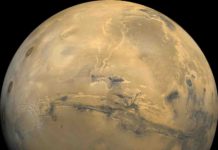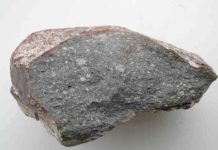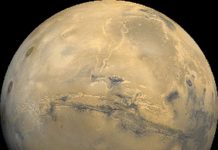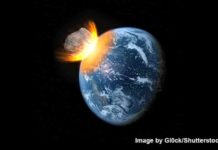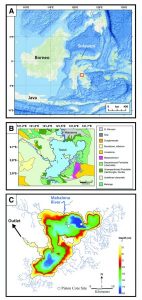
In their GSA Bulletin article published online last week, Timothy A. Goudge and colleagues detail the clay mineralogy of sediment from Lake Towuti, Indonesia, using a technique called visible to near-infrared (VNIR) spectroscopy. VNIR measures the signature of reflected light from a sample across a larger wavelength range than just visible light. At Lake Towuti, the spectral record shows distinct variations in clay mineralogy over the past 40,000 years.
The record also captures the response of the lake system to changing climate, including changes in lake levels, forced delta progradation, and river incision. According to Goudge and colleagues, this demonstrates the utility of VNIR spectroscopy in developing paleoenvironmental records over tens of thousands of years.
Interestingly, Goudge and colleagues also suggest that paleolake deposits on Mars should preserve similar paleoenvironmental information that could be accessed through remote sensing studies of stratigraphy and VNIR reflectance spectroscopy.
Lead author Tim Goudge says, “The major link between this study of lake sediment in Indonesia and lake deposits on Mars is in terms of the methods we used. We can differentiate material properties with color (e.g., rust is red because of the iron in it), so VNIR spectroscopy allows us to determine what minerals are within a sample of lake sediment.”
While this technique is relatively new for applying to lake deposits on Earth, it can be run remotely simply using reflected sunlight. Thus it is commonly employed to study the mineralogy and composition of the surface of other planetary bodies, including Mars.
Goudge says, “Our study shows that one can use VNIR spectroscopy to understand the evolution of past climate that is recorded by lake sediment. Therefore, we propose that applying a similar approach to studying ancient lake deposits on Mars at high resolution will help to unravel the history of ancient martian climate.”
Lake Towuti is also contained within an ophiolite, which is composed of very iron- and magnesium-rich (mafic) rocks, and so is more comparable to the mafic surface of Mars than much of Earth’s land surface, which is commonly more felsic (richer in silicon, aluminum, sodium, etc.). The compositional link is not perfect, however, so Goudge and colleagues more heavily emphasize the applicability of the technique.
Reference:
Timothy A. Goudge, James M. Russell, John F. Mustard, James W. Head, Satria Bijaksana. A 40,000 yr record of clay mineralogy at Lake Towuti, Indonesia: Paleoclimate reconstruction from reflectance spectroscopy and perspectives on paleolakes on Mars. Geological Society of America Bulletin, 2017; B31569.1 DOI: 10.1130/B31569.1
Note: The above post is reprinted from materials provided by Geological Society of America.




